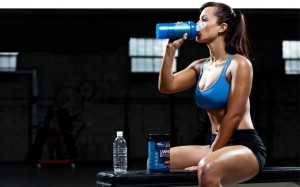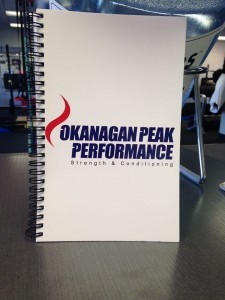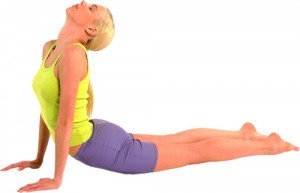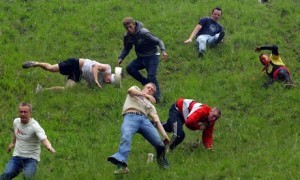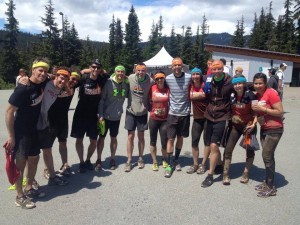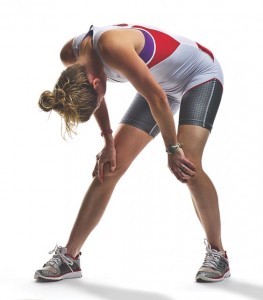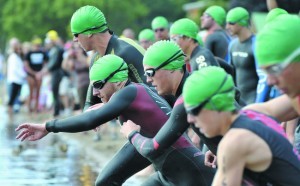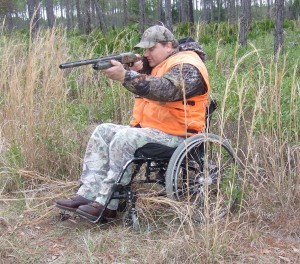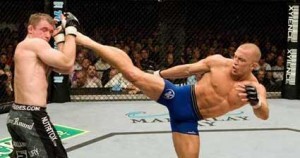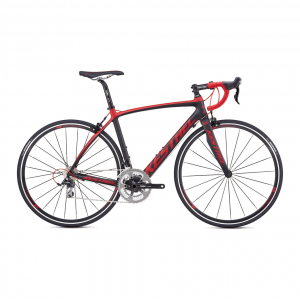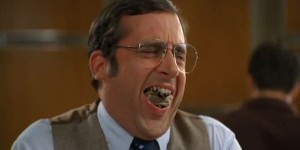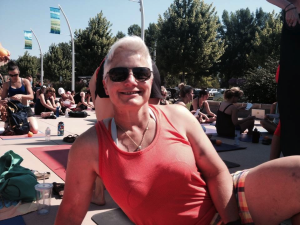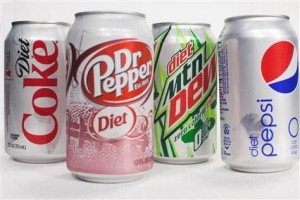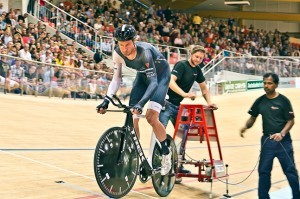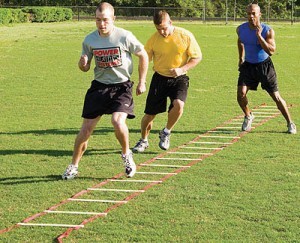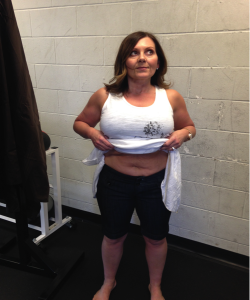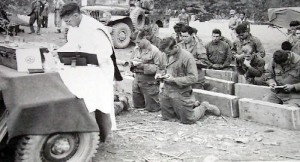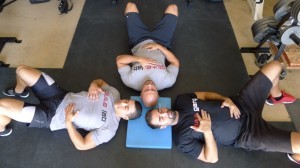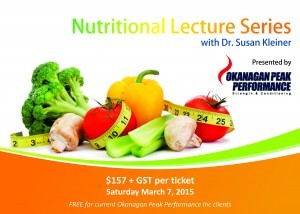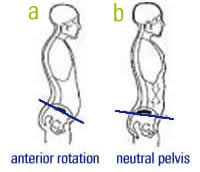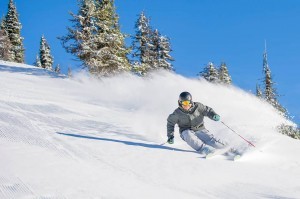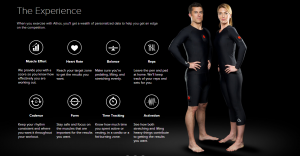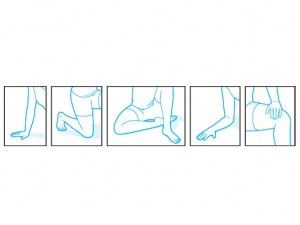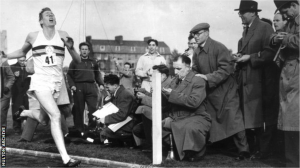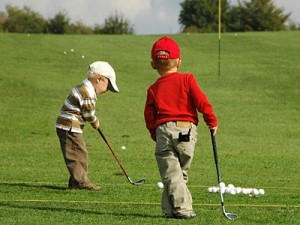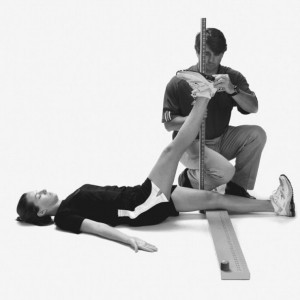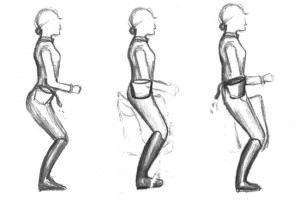One of the most common questions I hear with new clients is 'what kind of protein powder should I be taking?'. And while for the right person a protein supplement can be a great idea we need to keep the definition of the word in mind.In other words we need to remember that this is 'in addition' to and not 'in place of'. Too often we'll hear stories of clients who have a smoothie in the morning, will have a protein bar during the day and then eat dinner with their families.This is not the way to go. Instead what we recommend is to eat as much whole, fresh food as is necessary to meet your goals. And if you are someone that would benefit from additional protein than we may provide some guidelines as to how to choose a protein powder.#1 - Taste[caption id="attachment_4180" align="alignleft" width="300"] A protein supplement better taste great.You are more likely to use a protein supplement if you like how it takes. You will use it the morning for a smoothie, after training for a post workout shake and find other ways to include a scoop here or there such as in your oatmeal, pancake mix or other recipes.If the taste causes you to gag and your eyes to water than this isn't the product for you. As for what flavour to choose decide if you will mix the protein in milk, water, juice or use for baking. Chocolate is a popular flavour but doesn't have the same range of possible uses that a vanilla flavour does. Just something to keep in mind.#2 - SolubilityThink of this as to how well the protein powder mixes in the liquid. Some powders can be scooped into your drink and with a few swirls of the cup it is...
Fitness Trackers - Are They For You?
How do you track your training sessions? At worst I'm hoping you have a notebook to record your loads, weights, reps, sets, rest breaks etc and be able to refer to this information from one workout to the next.[caption id="attachment_4190" align="alignleft" width="225"] A training journal is a necessity for those seeking the best results.With something as simple as bringing a notebook to the gym you'd think everyone would do at least this much. it doesn't cost anything and takes no extra time or effort. You can make all your entries during a rest break or immediately after training.But besides going old school and low-budget with a journal there a number of fitness trackers which will monitor and record everything from heart rate intensity and averages, caloric output and even sleep cycles at night.Recently, a study at the Iowa State looked at the accuracy of 7 different fitness trackers. Researchers looked at BodyMedia FIT, DirectLife, Fitbit One, Fitbit Zip, Jawbone UP band, Nike+ Fuel Band and the Basis B1 Band. BodyMedit Fit and the Fitbit Zip were found to be most accurate. And in a related story Nike may be killing off its fuel band in the near future.But back to the point of gadgets to track your caloric output I have never really been sold on them. I'll admit there are benefits to knowing what your heart rate data is and to monitoring the length of your workouts. However when you think about it these type of products are usually favoured by those with a few pounds to spare.And my concern is that individuals tracking how many calories they burned at Zumba or spin class will then see this as a credit to indulge later. For example, if a fitness tracker shows that I burned 473 calories sweating to the oldies can I...
3 Tips for (almost) Perfect Lifting Technique
- Chris Collins
- Fitness
- Training
- Injury Prevention
- 1655 Hits
- 0 Comments
-
A couple of days ago a friend asked me 'What can I do to tone up? I don't want to injure myself but I need to turn things around.' Here's what I told him. First of all it's important to understand that this would be somebody that I wouldn't be able to coach and monitor the workouts. And this wouldn't be someone that I had worked with in the past that I knew their movement patterns, previous injuries and strength/weaknesses. Instead this was someone that wanted to 'tone up his upper body' (he flexed his biceps and grabbed it with the other hand as he told me this). And since he was highly motivated and wanted some help I gave the quickest answer I ever have regarding training as safely and as effectively as possible. Rule #1 - Maintain a stable head position You've probably heard the expression 'where the head goes the body will follow' and this applies to training. When you train you want to set the head in a neutral position and maintain that throughout your training. Too often we see people trying to crank out extra reps and they throw the head back (when standing) to generate some momentum and squeeze out another rep or two. Not only does this take stress off the working muscles, where you want it to be, it puts stress where you don't, such as on the low back. [caption id="attachment_4209" align="aligncenter" width="300"] Notice the position of the low back when the head looks up. ***quick drill to test this out...place your hands on your low back and look up at the ceiling...did you feel your low back relax?...now look down at your toes...did you feel your low back tighten up?...keep your head stable and neutral to avoid creating motion through the...
How to Have a Wolverine-like Body
- Chris Collins
- Fitness
- Training
- Motivational
- 1762 Hits
- 1 Comment
-
Have you seen X-Men? If you have (and if you're female) you're probably smiling to yourself as you recall Hugh Jackman (why is he shirtless so much?) from this movie. [caption id="attachment_4215" align="alignleft" width="300"] Muscular, lean & ripped. To say Jackman got in shape for his role as Wolverine would be an understatement. Jackman is ripped and has veins popping all over his chest, arms, and shoulders. So you probably have to be Hollywood star to achieve these kinds of results, right? I mean, this isn't the stuff of mere mortals. You'd need to be some kind of mutant to get in this kind of shape, right? Not necessarily. You can have similar results to Wolverine. And here's how. Tip #1 Make it your jobApproach your training as though it was your occupation. Lucky for him, Jackman has incentives to look great on the big screen. About twenty million of them. But what about the rest of us? We probably don't draw huge cheques based on the results we achieve from our training. But let's suspend reality for a second and pretend that we could. What would you change about your training? What time would you start? How many training sessions would you miss? What would your intensity be like during those sessions? It doesn't matter what we do for a living. Pretend that you are a big star and train accordingly. You will be on a forty foot big screen. And all your flaws and imperfections will be there for the world to see. And your subsequent offers and pay cheques will be related to your current training efforts. Kind of changes the approach we bring to our training, doesn't it? Tip #2 Do it first thing in the morningWith all this pressure riding on a jaw-dropping physique, when do...
Improve Your Speed & Technique with Downhill Running
- Chris Collins
- Fitness
- Training
- Injury Prevention
- 1771 Hits
- 3 Comments
-
I've just recently returned from the NSCA Hockey Training Clinic in Colorado Springs. This was the event to be at for those that train hockey players. [caption id="attachment_4237" align="aligncenter" width="300"] Not what we're thinking about for downhill running. There were presentations from a number of NHL strength coaches such as the Avs, Lightning and Blues as well as coaches from NCAA D1 schools, the Air Force Academy and private facilities. And there was one thing in common with the programs of all of these coaches which was the value of incorporating sprinting into the training program. And while I am big believer in the value of sprinting there is a certain type of sprinting which I feel can help not only make a player faster but also improve their running mechanics. And this type of sprinting is downhill running. Now before you all run off (pun intended) to give downhill running a try there are a few conditions that must be satisfied but you do. * you must not have any joint pain or injuries * you must already be doing some sprinting * you must already be doing some lower body strength-power training If you meet all of these conditions you are free to give downhill running a try. And here are the factors to keep in mind to ensure you get the most benefit from downhill running. 1. Consider the SurfaceWith downhill running you want to ensure that each foot placement is secure and won't cause you to go down. So you would want to avoid deep grass and roots, loose ground such as shale or anything else which may trip you up. To start with look for a smooth paved surface 2. Consider the AngleIt doesn't take much of an angle to benefit from downhill running. I remember doing...
Lessons from Tough Mudder
Last week team Okanagan Peak Performance Inc headed up to Whistler for Tough Mudder. [caption id="attachment_4245" align="aligncenter" width="300"] Team OPP post-Whistler Tough Mudder For some of us this was our fourth or fifth 'Mudder. And for others this was the first experience. Regardless of wether this was our first or multiple race of this type there are a number of take-aways to help others considering doing the same. 1. Saturday's Race is Fueled by Wednesday's MealYou know how people talk about a 'pre-game meal'? The food you eat before the big game to ensure you have all the proper nutrients and hydration to win the big game. Well, instead of thinking of this as the meal right before the race start thinking of a few days or even a week out. Eat better quality foods. Carry a water bottle and ensure you are properly hydrated. Pack enough food for your travel to the race. Bring food for breakfast on race day. Ignoring any one of these tips and you potentially jeopardize the results that might have been. 2. HydrationThis year at TM teams were taking an average of 4 to 4.5 hours to complete the course. And this year the conditions were warm for Whistler at 23 C. So when you consider you will be exerting for that long in warm climate you need to ensure that you don't become dehydrated. As soon as you sense thirst you are already dehydrated and performance is compromised. [caption id="attachment_4246" align="aligncenter" width="300"] Replacing only water can create problems But there's another thing to keep in mind. You don't just lose water. Sweat contains salt and you need to replenish what you are losing. I don't want to get too sciency on this but imagine if your body has a very specific salt concentration in...
Stand Tall for Better Recovery
- Chris Collins
- Fitness
- Training
- Work-Out Recovery
- 1635 Hits
- 0 Comments
-
One of the great things about coaching is that there are plenty of opportunities to train. We never have an excuse for access to equipment. While it's nice to have access to kettle bells, Olympic platforms and anything that makes a session more enjoyable the truth is all we need is gravity for an effective workout. But besides that we're always getting exposed to new training methodologies and research. And so this can become our lab. This is the place we test our theories, see what works, what doesn't and how to make any changes if necessary. And just as the best part of our job is the people we get to work with this place is great in that we can usually find another coach to rope into a training session. Megan, Kayla, Graeme and Jordy all place a high value on training and are always up for the challenge as well. Recently when training with Megan and Kayla I noticed they were doing something at the end of each set. And it's something most of us do usually out of habit. [caption id="attachment_4253" align="aligncenter" width="263"] Kayla or Megan? Take your pick If this were a live presentation and I asked for a show of hands 'who bends over and puts there hands on their knees to recover?' almost 100% of the room would be reaching skyward. But there's a couple of problems with this. First of all let's take a look at what an ideal posture should be. And compare this to the common forward head posture many people have. [caption id="attachment_4254" align="aligncenter" width="300"] Ideal or forward head posture Now if you look at the bottom arrow of the picture on the right you can imagine this is close to where the pelvis would sit. The picture on the...
Four Reasons to Compete
- Chris Collins
- Fitness
- Training
- Motivational
- 1780 Hits
- 0 Comments
-
For anyone that's been training for a while sometimes you need a reason to carry on with the efforts. Because when we first get started it can be easy to get motivated for training.[caption id="attachment_4272" align="aligncenter" width="300"] Get to that start line and good things follow.Sometimes we are exposed to a new style of training that we really like. And we meet new people. And we develop a new skill. And because we are new at this type of training the gains come quickly at the beginning.Consider for example someone who is active but has never done any resistance training. This person goes for runs, plays rec soccer and does yoga. But they have never done any type of lifting.In the first few months they may go from controlling their own bodyweight during an overhead squat, to doing a goblet squat with 65 pounds and eventually back squatting 240 lbs. Obviously this rate of progression does not continue indefinitely or everyone would be squatting 1000 lbs within a year.So for those people who aren't newbies to lifting how do they find purpose with their training? How do they continue to improve? How do they ensure they are on the right track?The answer is to enter a competitive event. And below are three reasons to enter a competitive sporting event.#1 - Know Thy NumbersFor people that train they can quickly rattle of what they squat, bench or deadlift. But these numbers are based on gym training sessions. These are numbers that were generated with our buddies spotting us maybe a little too generously. These were numbers we gave ourselves based on our interpretation of complete range of motion and ideal technique. Enter a powerlifting meet and you quickly find out how everything changes.But besides the fact that your best-ever lift in one particular lift is...
How to Achieve a Training Goal
- Chris Collins
- Fitness
- Motivational
- 1518 Hits
- 1 Comment
-
When was the last time you achieved something substantial with your fitness training? For example, when was the last time you set out to compete in a race and succeeded? Or you put your mind to losing the extra 20 lbs you've been carrying around? Or you made an effort to address the knee pain that's been holding you back from skiing and other activities?For most people this is an ongoing cycle of disappointment when it comes to training. And unfortunately for these same people there are a number of reasons (cough, cough excuses) why success was not realized.'I ran out of my supplements during the training phase''My training partner quit on me''I got really busy (at home, work, in general)''I wasn't sure what to do and how to do it'This last weekend Okanagan Peak Performance Inc was proud to host the 3rd Annual Okanagan Strength & Conditioning Conference. Speakers and attendees came to Kelowna for 3 days of learning, networking and professional development. And from one speaker to the next there was a theme that kept popping up. And this theme had to do with how you approach a goal or task.[caption id="attachment_4286" align="aligncenter" width="300"] Plan the hunt. Do the hunt. Review the hunt.For example when Dr. Stephen Norris, vice-president of Winsport Canada, spoke he talked about the importance of having a plan, executing the plan and then reviewing the plan. And when noted-strength coach Dan John spoke he compared the concept to hunting. He said you need to plan the hunt, then do the hunt and finally evaluate the hunt.Below I'll break down in more detail what each of the presenters was getting at and how to apply it to your own situation.Step 1 - Have a PlanThe sad truth is that most people that approach tasks in life...
2 Tips to Make More Putts
- Chris Collins
- Fitness
- Training
- 1720 Hits
- 0 Comments
-
Are you a golfer? If you live in Kelowna there's a good chance you are because the sport is huge here and people can play 6 or 7 months of the year with over a hundred courses to choose from. But even if you're not from the Okanagan you may an interest in getting in a round every now and again. And the funny thing about golf is that it's so hard to master. It's pretty tough to have your driver dialed in, hit your irons tight to the pin and then drain all the short to medium distance putts. What's even funnier is the emphasis we place on driving compared to putting when it comes to practice. People will hit hundreds of drives at the range but zero putts. And during a round they may pull the driver out of the bag 18 times max during a round but putt anywhere from 1-3 times per hole. So 18 total drives versus 18-54 putts per round. And with a few par 3s thrown in there there's no way you will use the driver 18 times. Anyways, you get it. To lower your score work on your putting. So how can you shave strokes off your score with improved putting? Well I'm not a golf pro so won't tell you anything about grip, club path or how to read a green. Instead I want to give you 2 tips from training that should help you make more putts. Tip #1 - Set the Stone, Fire the Hammer[caption id="attachment_4294" align="aligncenter" width="300"] GSP sets the stone and drops the hammer on Hughes' head. A few years ago I was able to set Dr. Stu McGill present in California. And if you're familiar with Dr. McGill he's one of the premier spinal researchers in the world....
Stretches & Exercises for Cyclists
- Chris Collins
- Fitness
- Training
- Injury Prevention
- 1551 Hits
- 0 Comments
-
Do you like to cycle? If you live in Kelowna there's a good chance you own a bike and are familiar with the various gran fondos and triathlons that take place in the Okanagan. Recently I sold my car and needing something else to commute I thought I'd pick up a road in the meantime. I went for a road bike over a mountain bike for a few reasons. One was that we live on a hill and going home at the end of the day is a lot easier on a 16 pound versus a 40 pound bike. Plus the speed of road cycling is definitely appealing. [caption id="attachment_4300" align="aligncenter" width="300"] My new ride. A 2014 Kestrel Legend. So I picked up a Kestrel Legend and love it! Whenever I plan morning rides with friends I tend to wake up in the middle of the night and start getting dressed thinking it's time to go. Nevermind the fact it can been anywhere from 1230-330 am and pitch black outside. I'm ready to go riding. But as I ease into to this sport I am noticing a few things I will need to tweak with my training. And if you're into riding as well these may help you also. 1. Stretch my hipsWhen you're riding your hips are flexed. Other than the fact your knee and ankle are moving the hips are in a fairly constant position of flexion. So to balance this out will mean extra timing with the lacrosse ball, foam roller and hip stretching in general. [caption id="attachment_4301" align="aligncenter" width="248"] Rear foot elevated hip flexor stretch. Ensure the knee-hip-shoulder-ear all line up. While on a ride I will stand on pedal and drive my hips forward to the handle bars as much as possible. I'll hold that position for as...
An Easy Way to Be Better at Every Sport
- Chris Collins
- Fitness
- Training
- 1587 Hits
- 1 Comment
-
Do you remember growing up and having your parents drill into you proper manners? I'm talking specifically ones that had to do with your mouth. You know what I mean? [caption id="attachment_4312" align="aligncenter" width="300"] Poor manners cost him a lucrative pro career. 'Chew your food with your mouth closed' 'Don't smack your gum' 'Close your mouth' And besides helping me develop proper manners and etiquette so I won't be a social outcast this also helped me with my sports performance. So thanks mom & dad! But how exactly does chewing with your mouth closed help with sports performance? Well honestly it has nothing to do with the nutrition and more to do with how we take in oxygen and expire carbon dioxide. I've got to give credit to Mr. Sherwin, my high school science teacher, for teaching me some of the following. Below are 4 benefits of nose versus mouth breathing. Benefit #1 - Nasal air is warmed and humidifiedWhen you consider the location and properties of our lungs we know they are in the chest cavity and moist to facilitate inflation, deflation and gas exchange. The more similar the air we breath in is to this environment the better. For example, air taken in through the mouth needs to warmed and moistened before arriving at the lungs. ***I remember when going to university in Regina riding my bike in the middle of winter. In -35 C weather I learned that although you may be tempted to ride quickly to get out of the cold weather more quickly this caused me to breath through my mouth and typically was followed by a sore throat or chest cold. It was a better strategy to bike more slowly and keep my mouth closed. This allowed me take air in through my nose only and...
How to Get Started with a Heart Rate Monitor
- Chris Collins
- Fitness
- Training
- Fitness Equipment
- 1616 Hits
- 1 Comment
-
Many people are into running, cycling, triathlon and other endurance events. It's surprising with how much is invested into these sports both in terms of time and money that more people don't use heart rate monitors.Why is using a heart monitor such a great idea? Well it for starters it allows the user to get better results in less time. It makes training more efficient and safer.[caption id="attachment_4325" align="aligncenter" width="300"] How far would you drive without any feedback?Consider owning a high performance sports car such as a Ferrari. You only drive this car in the summer and only on certain roads. It never sees the rain or snow. If you have to park you are that jerk that takes up two spots to give a large buffer. Servicing is done by the only person within 100 miles that works exclusively on Ferraris. It only takes premium fuel and you make sure to log and note everything about this awesome machine.Now let's say you plan to take your Ferrari out onto the highway for a few hours to have some fun. You want to test out the handling, the acceleration, how it climbs and most importantly to feel the top end speed.Only one problem...none of your gauges are working. While you can start and turn the car on all of the needles for every gauge are buried to the left. So you can't read the speed, temperature, tachometer...nothing works.Are you still going out for that drive with no feedback on how the car is performing? Probably not. I'm guessing some people might even call for a flat bed tow truck as to not risk doing any damage to the vehicle while out on the drive.But guess what? You are way more valuable and rare than a Ferrari. In a lifetime you could own...
Amazing Results for Darlene Sunderland
Hey! How’s it going? I hope you're doing well as I’ve got a great success story to share with you. This story is about Darlene Sunderland and she has realized some amazing results over the last bit with her training. You know Darlene, right? She usually trains with group at 6am. If you can’t put a face to the name, she’s the one whose chanting AH CHA CHA CHA or dancing to the Black Eyed Peas in between sets. Besides that she is also very dedicated to her partner, her job and running ½ marathons. Darlene is a great example of someone who is willing to put in the work to get what she wants. She’ll work a nightshift until 7 am and still meets us to run sand dunes at 730 am. She’s well deserving of the results she has achieved here with us. Now, before I get to telling you everything Darlene has achieved in a short amount of time I should back up and give you the background. I’ll let Darlene take over here for a bit. “I live a pretty boring life, but I love what I do and my life. I enjoy going for long hikes with my dogs, running, traveling, learning and spending time in the wild. I also have this newfound love for running up hills. Some may call me crazy because I also really enjoy cleaning my house. I find cleaning to be very therapeutic. I guess overall, I love to stay busy. Rock Your Jeans Got Her StartedIt was a chain reaction on how I rolled through the Okanagan Peak Performance Inc doors (no pun intended). My partner is a member of OPP, and I kept noticing a change in her fitness level & health since she joined and wished that I...
Diet Pop and Glucose Metabolism
This past weekend we had a birthday party for our daughter Olivia. And as with many parties like this there was food, cake and drinks. [caption id="attachment_4341" align="aligncenter" width="300"] What healthy people drink, right? Because we're all trying to do the best we can with our health we have diet pop as an offering. And I'm sure many of you are the same. If you drink pop you probably opt for the diet version, right? Not many health conscious people are buying regular Coke or Pepsi when they do the grocery shopping. So why do we choose diet pop? Well I guess it has to do with the fact that we don't want empty calories. I mean if I'm going to eat or drink something I better be getting some kind of nutritional benefit from it such as protein, healthy fat, vitamins, minerals, hydration etc. Regular pop offers virtually none of these but does have a dose of sugar, carbonation and is acidic. But besides avoiding the extra calories by drinking diet pop the other reason to avoid it was for the fact it wouldn't alter our blood sugar levels. In other words we didn't have to be concerned with the connection to type II diabetes and other metabolic disorders. Until now. A new study in the journal Nature found that consuming an artificial sweetener may impair glucose metabolism similar to that seen in type II diabetics. In the study researchers fed mice and humans one of three treatments, glucose, saccharin (the artificial sweetener) or glucose. You may be familiar with saccharin as the sweetener in Sweet N Low. Anyways, only the group fed saccharin showed altered glucose metabolism. So what is taking place that is accounting for this altered glucose metabolism? Well it appears that the mice and people fed saccharin...
The Potential Within
- Chris Collins
- Fitness
- 1684 Hits
- 0 Comments
-
Have you ever wondered if you could do something extraordinary with your health and fitness? Or maybe you watched an impressive feat or display of athleticism and wondered what that must be like? For example whenever the Olympics roll around there are some many uplifting stories that cause us to stop and be amazed at what the human body can do. Recently, Jens Voigt of Germany set a new standard for the most distance covered in one hour at a velodrome in Switzerland. Voigt rode 51.115 km beating the previous best by 1.4 km. And because Voigt is 43 there is still hope for me. [caption id="attachment_4347" align="aligncenter" width="300"] Jens Voigt starting out. Over 51 km an for a solid hour! If you ride you can appreciate how fast that is. And if you don't ride borrow a friends bike with a cycling computer and see how fast you can go for 30 seconds. Just try it. I'll wait. I'm guessing for 99% of people the speed wouldn't go above 40 km an hour for those seconds. Now imagine going over 25% faster. And now image holding that speed for an entire minute. And now imagine holding that pace for 60 minutes. But the other freaky thing about this speed is that it is an average speed. In another words his top speed would be above 51.115 km per hour because he started from a dead stop i.e. speed equals zero and because through the middle section he may have hovered just under 51 km/h. So he had to hit speeds above 51 in order to average 51 km. Now that someone has cracked the 50 km barrier it won't be long before others improve upon this mark and keep pushing the standard higher. Because sometimes all we have to know...
4 Tips for Speed
- Chris Collins
- Fitness
- Training
- 1684 Hits
- 1 Comment
-
If there was one quality I would always choose as a coach it would be speed. You can have big players and strong players. You can have fit players and smart players. But the truth is that speed kills. Period. So knowing the importance of speed how do we get faster? Unfortunately many still believe this is the way to develop speed. And while 'speed' ladders might be useful for working on different footwork patterns, coordination or simply to help an athlete warm-up they don't do much in terms of speed development. Below are four ways to improve your speed and dominate your game. Speed Tip #1 - Increase Your Stride RateThere is formula that gets passed around coaching circles that speed = stride rate x stride length. While there is some truth to this there is more than be done than simply working on these two qualities. When we talk about stride rate we are referring the the turnover of the legs. How quickly can an athlete take a given number of steps when sprinting. And primarily what we are concerned with here is training the relevant muscles to fire quickly. And to do so is not so much a questions of strength or fitness as it of nervous system development. There have to be elements in the training program where the athlete is performing movements at high speed with sub-maximal loads. Speed Tip #2 - Increase Your Stride LengthHave you ever seen an athlete whose arms and legs are moving really fast? But the weird thing is they aren't moving faster than any of the other athletes in the game. Some coaches get fooled into thinking some of their athletes that move like this are really fast. But when you test them they aren't fast. And in games they...
Vitargo - Leading Athlete Fueling
- Chris Collins
- Fitness
- 2270 Hits
- 1 Comment
-
Do you take supplements? This could be anything from an omega-3 or a multi-vitamin to taking a creatine, beta alanine or a protein supplement.I'm always curious about the people who don't take supplements? I try and think of all the reasons someone might say 'no thanks, not for me'. And really this comes down to people who are at the peak of their health or fitness, who don't recognize the benefits or who don't have the financial means to do so. Let's look at each of these.Excuse #1 - I'm in the best shape of my life alreadyIf you asked most people 'are you in the best shape of your life' very few would say yes. And those that would say yes may still have untapped potential depending on what they've already achieved with their training. For example, someone may have lived most of their life as an obese person and now would consider themselves the healthiest they've ever been. But there is still room for them to improve and realize more gains.Excuse #2 - Skeptic of the scienceAs for the skeptic that doesn't believe supplements work, they may have had a bad experience with a previous supplement. But there is more and more research evidence that certain metabolites, such as omega-3 and creatine for example, offer health and performance benefits. To deny the benefits means refuting science. And there will always be some people that deny science and research. Consider the fact that there is a Flat Earth Society shows how some people will always refute the truth.Excuse #3 - Supplements are expensiveAnd when you consider the argument that supplements are expensive this may be true depending on what an individuals buys and how they use it. On the other hand you could argue that a particular supplement may improve...
Reflections on my lactate testing
- Chris Collins
- Fitness
- Training
- 1667 Hits
- 0 Comments
-
If you are serious about getting better at something than you need to test yourself every now and again. For example, you can't claim to be a fast runner if all you do is go for runs but have never stepped up to the line in a race to measure yourself. However that's the way a lot of people approach their training. The put in training session after training session, week after week and this continues on indefinitely. Not only does this approach never really tell you how good you are if never really tells you what your weak links are and what could be improved. Lactate Testing at UBCORecently I had the opportunity to go out to UBCO and do some testing. This was a test performed on a stationary bike to determine my VO2max, lactate threshold, max power and other interesting facts about what my body does when cycling. The first thing you notice when you do this test for the first time is that it's not comfortable. And I'm not talking about the physical discomfort. That comes later. Instead I'm talking about the unusual sensation of having your nose plugged and a snorkel type of mouth guard connected to tubing that can measure your expired air. In other words a computer can detect changes in the amount of oxygen and carbon dioxide in the air that is exhaled. So picture a halo type of apparatus sitting on top of your head, with a mouth guard and tubing attached to the computer beside you and a nose plug to ensure gas exchange only occurs through the mouth. And this is what is a little uncomfortable. Because once in a while in normal living we may have to take an irregular breath. Instead of the normal inhale-pause-exhale pattern of breathing sometimes we...
The Benefits of the Placebo Effect
Whenever we add a new member to our team we use a fairly standard evaluation process. And this includes asking what they think is the most important element lending to the success of the client.And their answers vary from:'Nutrition is the most important. You can't out-train a poor diet. And society in general is eating poorer quality food and more of it.'Can't argue with that.Others will say:'Getting enough varied and intense exercise is the key. With some many modern conveniences we can work, shop and be entertained without getting off the couch. Plus fewer schools, in the US, offer physical education and kids are more into social media and gaming.'Good points for sure.Really confident young coaches will say:'The coaching is the most important. Showing people the proper and safe way to train allows them to lift more intensely than otherwise. Plus they the individual is accountable to another person ensuring better compliance to the process.'Ok, yeah that makes sense.And still others will argue that:'The program is the most important. As long as you have a solid plan for what is supposed to be done, how much and when, anyone can implement the instructions and get the same results.'I wouldn't disagree with that one either.But guess what? They'd all be wrong. Because the first and most important consideration for achieving a rehab, weight loss or performance goal is mindset.If you believe you will fail, you already have. If you don't trust in the process you are just going through the motions. And if you don't believe that you can achieve great results you won't.When I look back after all the years of working in the fitness and performance industry there is one common feature of those who achieved the best results. And that was their positive mindset. It was the belief that they could do...
End of the RICE age?
I'm a big fan of systems. And often times systems go hand-in-hand with acronyms. Consider for example that SYSTEM is an acronym for save yourself time energy and money.This can help us remember what to do and ensure that something is done the same way each time.If you played sports growing up there is a good chance you sprained an ankle or had some other type of soft tissue injury at some point. And do you remember what the protocol was for this type of injury?RICE which stands for rest, ice, compression and elevation was the solution to treating our injury and ensuring recovery. More recently there is some debate as to whether this is still the preferred protocol.You don't have to go back many years to when the recommendation for an episode of low back pain was bed rest and ice. Now medical professional will encourage a return to regular activity as soon as it is safe to do so. Which is the opposite of bed rest. Instead the prescription is movement rather than rest.But what about ice?And where does heat factor into this?Let's look at each individually to see what each does for us and come up with a recommended plan for you.ICEWhat it doesThe application of ice is typically used to control inflammation and does so by constricting blood vessels in the vicinity of the cold. There will also be an analgesic (pain relief) effect from the topical application of ice.When it may helpTreatment with cold or ice (cryotherapy) may be beneficial after a heavy lifting session, between training sessions or with an acute muscle injury.How long to useFor an acute joint sprain ice may help in the first 24-48 hours to help reduce inflammation and provide some pain relief. It is important to recognize however that the...
Creatine, Beta Alanine & CLA
Sport supplementation is as popular as it's ever been. More people are 'taking this' or 'swear by that'. But where do they get their info on a particular supplement?Is it based on which has the best ads in a fitness training magazine? Or is the product recommended or endorsed by the reigning Mr. Olympia? Or maybe even an Olympic champion?Maybe the person at the local health food store is friendly, healthy looking and seems knowledgeable? They're there to help, right?Where does the research factor into the search for safe and effective sports supplements? And if we are going to look at the research than which studies count? Do they have to run a minimum length of time to show a physiological adaptation? Should they include a minimum number of test subjects? Should these subjects be young? Old? Male? Female? Athletes? Sedentary? Healthy? Diseased?Is the research even on human subjects? Or what if it is using rats?And does it matter who funded the research?There are enough questions there regarding research in the primary literature to make your head spin.And that's assuming the reader has a background in science and statistics as well as the time to break down all the studies out there.That eliminates 99% of us, doesn't it?And it makes most of us a little more vulnerable to all the ads, marketing and pitches to get us to buy this and take that.If only there was a better solution. A place where someone in the know could break down the science into small manageable and easily understood recommendations for all the various supplements that exist.Guess what? There is such a place. And it's called examine.com. This is my go-to resource for anything related to sports supplementation. But don't my word for it. Go check it out.And if you like what they're...
13 Traits of Those Achieving the Best Results in the Gym
Have you ever the expression 'success leaves clues'? Even if you haven't heard of this one you are probably familiar with some version of it that has to do with modelling the traits of successful people. And while this list applies specifically to results in the gym you could very easily substitute the title to emphasize to entrepreneurs or something else and the same traits would apply. So with that in mind here are 13 Traits of Those Achieving the Best Results in the Gym. 1. They look for solutions not excusesClients that achieve the best results look for ways to be successful. When they are injured they ask what they can still do rather than list off all the reasons they can't train. If they have a food allergy they seek out alternative ways to satisfy nutrition requirements rather than opting for lower quality & convenient options. When they travel they run stairs in the hotel, do core or mobility drills in their hotel room or swim in the pool. 2. They bring a positive attitudeHave you ever trained when Darlene, Kimberly or Gary are in? I don't think I've ever seen them have a bad day. They're always smiling. They introduce themselves to others. They even sing in the early AM before the speakers come on. And guess what? There is a correlation hormonally between being happy, having less cortisol (or less stress hormone) and being able to get quality sleep, lose body-fat and get great results. ***btw I could list many more names of the amazing clients we get to work with but you get the point*** 3. They planHere's another expression you may be familiar with...'Prior Planning Prevents P*&% Poor Performance. And it refers to planning. Everything. You have to know when your training sessions are. What you will...
Why Use a Heart Rate Monitor
Do you use a heart rate monitor when you train? I guess at most big box gyms the majority of people don't. I mean when you consider that most people don't have a training journal to record their workouts they probably aren't going to go to the trouble and expense of investing in a heart rate monitor. But for those that do have and use a heart rate monitor I'm curious as to what they monitor? Again if I had to guess what number most people check first when they complete a training session I would say it's the calories consumed. And this is kind of amusing because: A. This is simply a rough estimation of correlating calories burned with elevated heart rate. If this is all it took to get lean we could probably just watch marathon horror movies every day to spike our heart rates repeatedly, burn tons of calories, and get lean. B. The estimation is just that. It uses an average and includes the calories burned while at rest. In other words if my body uses 50 calories at rest and 110 calories to go for a hike than the hike only burned 60 calories. But the display on my heart rate monitor would show 110 calories and perhaps give me a false impression of how effective a particular training session was. But other than tracking the calories consumed a heart rate monitor can tell us the duration of our exercise, our average heart rate and our maximal heart rate. Now you can always pick up models with other functions that include lap functions, GPS, elevation and other things but at minimum you'll get heart rate data. So why would I want a heart rate monitor anyway? Can't I simply stop and check my pulse every now-and-again? To answer...
How to Improve Lactate Threshold
- Chris Collins
- Fitness
- Training
- 1708 Hits
- 0 Comments
-
In the last post we talked about why people may use a heart rate monitor. Click here if you missed that post. Besides the most common value people check when they use a heart rate monitor, which is calories burned there are a number of other benefits to using one. But first we should do a quick review so we're all on the same page as to what we're talking about. So here's a quick recap of some of the terms you may get thrown around on blogs and in training circles. Anaerobic Threshold - This is the intensity of exercise where energy demands cannot solely be supplied by oxygen and must be supplemented by anaerobic metabolism. Lactate Threshold - As the demands for energy produced anaerobically increase there is a lactate accumulation in the blood as well. Lactate accumulates because it is being produced faster than it can be cleared from the blood. The units for this measure may be expressed as mmol/L. VO2max - This is the highest rate of oxygen consumption at maximal intensity exercise. In other words when we are below our VO2max we can still consume more oxygen with increasing intensity. However once our VO2max has been achieved further increases with intensity will not result in increased oxygen consumption. In terms of units it is usually expressed as ml/kg/min. If I've worked with you before or you are familiar with our coaching style at Okanagan Peak Performance Inc you'll know we use a lot of analogies. So here's the analogy for lactate threshold and VO2max. Lactate Threshold is like the floor in your home. VO2max is like the ceiling. With my own training I would like to improve my lactate threshold. In other words I want to raise the floor up towards the ceiling. Let's throw...
What to do about tight hamstrings
Ask 100 people that train where they are most tight and you will probably hear hamstrings singled out as one of the most common problem areas. I would include tight hips as well as the two are intimately related and if you have tight hamstrings more than likely have tight hips as well. So first of all, if this really a case of tight hamstrings? And, if so, what can you do about it? To answer the questions to these we need to go back the basics. This means evaluating a person's static posture. I like the way Dan John describes the relationship of the hips/pelvis and the rib cage. He says to imagine the hips/pelvis as a bowl of water with a box sitting on top. Does the bowl of water sit level? Or is there water leaking out of the front (anterior tilt) of the bowl? Or out of the back (posterior tilt)? Before we can even start to think of lengthening or shortening any of our tissues or structures we need to know that the foundation is solid. A quick and easy drill to learn the range of the hips and pelvis is the cat and camel. Starting on hands and knees imagine spilling water out of the front of the bowl. You should notice an increased arch through the low back. Next try and spill some water out of the back of the bowl. Dr. Jeff Cubos, who presented at the inaugural OSCC, used the analogy of trying to scoop ice cream with your butt. Use whichever analogy works for you. http://youtu.be/CXRsjICsGnc Once we have established a neutral hip and pelvic position we need to recognize that tight hamstrings may also be due to weak lower abs and/or hip flexors. Think about it this way. If you had...
Fitness Training in Cold Weather
- Chris Collins
- Fitness
- Training
- 1693 Hits
- 0 Comments
-
So the weather has dropped significantly here in Kelowna over the last week. And I'm sure the rest of Canada is calling us weak for complaining about the weather when we have some of the mildest weathers in the country. But if we didn't talk and occasionally complain about the weather we really wouldn't be Canadian, would we? And before we either settle in for a complete season of hibernation or rush straight to continue our outdoor training there are a few things to consider with outdoor training in the winter. 1. Lower Relative HumidityWhen the mercury drops the cold air can hold less water and relative humidity drops. There is then a greater likelihood that we will lose water from our cells as a result to this difference. As a result we have to make sure to drink enough water prior to training and to continue to hydrate during exercise. Typically we only think to hydrate in warmer temperatures and forget to do so during the winter. Be aware of the increased need as a result of changes in humidity. 2. Nasal BreathingI remember when I was going to grad school in Regina riding my bike to the lab in the winter. It would be -35 C out and your extremities would be so cold. It would take forever for my toes, ears and nose to thaw out. And even though it was painfully cold you could only ride so fast. The reason you couldn't just sprint was that the air was so cold you couldn't inhale through your mouth and warm the air enough. It would reach you lungs still cold and feel as though pneumonia was inevitable. When you venture out in cold temperatures make sure to control your breathing enough so that you can in inhale mostly through your...
Louise's Amazing Transformation!
Hey! How’s it going? It’s Megan here and I’ve got a great success story to share with you. This story is about Louise Fisher and she has realized some amazing results over the last bit with her training. You know Louise, right? She is usually in at the 830 or 930 group classes every day. Louise is very much involved with her business and every other week heads off to Calgary to manage their head office. Besides that she is also a mother of 3, and a grandmother to 2 young boys, which makes the results she has achieved even more impressive. Now before I get to telling you everything Louise has achieved in a short amount of time I should back up and give you the background. You see Louise was someone who came in wanting to lose 10 pounds and tone and strengthen her body. Her friend Annette mentioned the first RYJ program to her and asked if she was interested. She was reluctant to try it as it was outside of her comfort zone and, knew she would have to weigh herself. Maybe you can relate to Louise in sharing these same challenges such as feeling intimidated, stepping outside of your comfort zone with the training, or something else standing in the way of optimal health? “The biggest obstacle I've discovered is myself, I have learned that I can do most of what I set my mind to and if a certain exercise is too hard, or I perceive that it is something I can't do, I look around the gym and find inspiration with the other ladies working through their own hurdles. It's very motivating to work as a group and everyone is very encouraging.”But even though Louise had these challenges before her, she still had the goal...
3 Quick Steps for Choosing the Perfect Supplement
Many people take supplements of some type. This may be a multi-vitamin, an omega-3 or maybe a protein powder.But how is it they come to the decision to supplement?And how do they choose what to take?And what brands do they decide to go with?At Okanagan Peak Performance Inc our philosophy on supplements is to keep the definition of the word in mind. In other words we should be seeking things that 'add to' something else rather than something that becomes 'in place of'.So for someone considering a supplement we may ask why they are considering it? It could be that an individual does not like the taste of fish or seafood and therefore barely eats the minimum dose of omega-3s. Or a young growing athlete struggling to put on mass may benefit from adding a smoothie to his or her post workout shake.In any case here are 3 steps to help you choose the right supplement.Step 1 - Know Your GapsAs we mentioned above a supplement should be something taken 'in addition to' something not 'in place of' something else. Once we are clear on this then the goal should be consume adequate amounts of the various nutrients to satisfy all of our bodies needs whether they be for weight loss, rehabilitative or performance goals.What we need to know is which nutrients are we not getting enough of that our bodies cannot make on their own? Protein supplements might be very popular but maybe I eat enough meat, fish, pork and seafood already and wouldn't really benefit from a protein supplement.Or maybe someone recommends I try creatine as is relatively safe and has been proven in the research to be highly effective. But if I'm not a power athlete and my goals aren't competitive should I still try it?When you consider a supplement...
What is the best cardio to do?
- Chris Collins
- Fitness
- Training
- 1630 Hits
- 0 Comments
-
People love 'best of' lists. Whether it be when buying a car and picking up a copy of Consumer Reports or watching David Letterman's Top 10 List we love to have things ranked for us.And a common question coaches and trainers get from their clients is 'what is the best...' and you can fill in the blank for whatever it is someone might ask when working with a fitness professional.For example, you might hear questions about what is the best stretch for this muscle group, or what is the best supplement I should take and another popular one is what is the best type of cardio I should be doing?Let's take a look at this last question, what is the best type of cardio I should be doing, and answer that one first.Step #1 - What is the Purpose?The first thing we need to know is why I are we choosing to do cardio in the first place? Is the end goal fitness or performance? Knowing the answer to this gives us a better idea of what the next step should be. Let me take a moment to explain.Actually, I'll back up another step here first as well. While the title and the body of this blog uses the term 'cardio' know that we mean energy system training (EST). When we say cardio, or cardiovascular, some people will understand this to mean aerobic training and not consider anaerobic types of training. However, fewer people will use the term energy system training, which includes aerobic and anaerobic training, so we are going with what most people are familiar with which is 'cardio'.Now to address the previous question are we looking to do some energy system training (EST) to get better for a sport or performance or are we looking it as a...
A Few Recommended Reads
- Chris Collins
- Fitness
- Fitness Education
- 1684 Hits
- 0 Comments
-
Reading is probably one of my favourite ways to relax. While I don't mind catching up some shows on Netflix or watching a movie there isn't the same kind of relaxation involved with reading.It might have something to do with the fact that movies involve more external stimuli and reading is more internal. I don't know? All I know is that it's pretty darn relaxing to have an interesting book to lose yourself in forDitch an hour or so.With that in mind here are some of the books I'm currently reading and some of my favourites as well. Feel free to add your faves to the comments section below.Non-fictionInfidel: My Life by Ayaan Hirsi AliThis is an incredible true story that my wife and I both really enjoyed. It's told from the perspective of the author who escapes her Muslim upbringing in Africa and flees for her life to Europe. Against her families wishes and ditching her arranged marriage there is a bounty place on her capture and return. She later becomes a member of Parliament in the Netherlands and advocates for helping others suffering as she once did back in Africa.The Long Walk: The True Story of a Trek to Freedom by Slavomir RawiczThis book came out as a movie a few years but really didn't do it justice. But that's no surprise. Movies can never measure to an incredible book. Recently as well, there have been claims that the story was fabricated or exaggerated. This doesn't change it for me. I still found it a great story about over-coming adversity, the will to live and realizing how good we have things.Unbroken: A World War II Story of Survival, Resilience, and Redemption by Laura HillenbrandAre you seeing a pattern here? Yeah, I like stories of survival and Unbroken is one...
Why You've Failed & How to Succeed
- Chris Collins
- Fitness
- Motivational
- 1526 Hits
- 0 Comments
-
This is the time of year when everyone wants to set goals. We turn over the calendar for a new year and instinctually feel compelled to identify some area of our lives where we would like to see improvement.Personally I don't set new year's resolutions. And the reason is that I have goals, targets and things I would like to achieve already planned out for the entire year. I know what the goals are for our business. I know where we want to go with our conference. And I know what I want to achieve with my fitness training. If I were to add anything it might be some goals for trips and family experiences.So when January 1 comes around it's no different for me than February 1, March 1 or any other day of the year. I am constantly planning out what we want to accomplish, setting out to execute this plan and then reviewing how we did.But I recognize for many this is not the case. A new year is an opportunity for a fresh start. This is where we can make good on all our hopes and dreams and realize our potential.And since health and fitness is tied in with many resolutions at this time of year I find it interesting the answers people will give to the question 'What has contributed to your current state of health?'. For example, if someone is 50 lbs overweight, or has low back pain or cannot walk a flight of stairs, I'd like to know what their thoughts are on how things got to be so bad.Answers to this question may include:* 'My nutrition was really poor'* 'I didn't have time'* 'I have low iron' (or testosterone, or a thyroid condition, or...)* 'My training partner moved away' (or coach, or trainer...
A Great Drill For Low Back Pain
Low back pain is something almost everybody experiences at some point in their life. And once we've suffered through some low back pain we usually want to know what caused the pain and what to do about ensuring it doesn't happen again. And while there may be a variety of causes and types of low back pain there are some things in common to all. First of all, in order to prevent future episodes of low back pain we want to to ensure we have a solid foundation and can move through an optimal range of motion. To look at the first condition for a solid foundation we need to consider our posture. Do the joints of the body stack evenly like pieces of lego? Or are there some areas where they are deviations from optimal alignment and smooth curves? This may get tricky for the lay person because how are they to know what is optimal? And often times manuals and references used technical terms which can confuse even people who work in the fitness industry. In this case I like the way Dan John describes the relationship of the hips and pelvis with the torso. He has described this as a box (torso) sitting on a bowl of water (hips & pelvis). Does the box sit squarely on the bowl of water? And is any water leaking out of the bowl of water? If so, is water leaking out of the front of the bowl (anterior tilt) or the back of the bowl (posterior tilt)? If the rib cage is flared or tilted up than the box is not sitting squarely on the bowl of water. And if we are spilling water than we know how to correct this problem as well. The solution comes via the kneeling plank. It...
Plan to Fail
- Chris Collins
- Fitness
- Motivational
- 1658 Hits
- 0 Comments
-
Are you a planner?Or are you more of a fly-by-the-seat-of-your-pants kind of guy or girl?I can honestly say I am a planner. I plan everything. From meals for the week, to my workouts and which days I will go skiing. I know which days I will write these posts for you (Monday, first thing in the morning in case you are wondering) and when I will check email and reply to phone calls. I know when I will work on the conference and when I will book appointments for meetings.Here's a story that might explain it all for you.When Alexandra and I made our first trip to New York a few years ago we knew had a list a mile long of things we wanted to see and do in NYC. There was the Statue of Liberty, Times Square, Central Park, Madison Square Garden, The Late Show with David Letterman...and well you get the idea. For a city that never sleeps there are endless options to see and do while in the big apple.So someone had to come up with a plan. And here's what I did.I photocopied a map of Manhattan on a legal size piece of paper. I then located all the places we wanted to be. For example, there was an 'x' showing where our hotel was, and one for Rockefeller Centre, the Empire State Building and any other landmark or event we wanted to do. Next I started to arrange these plans in terms of location and days they would take place. For example, some Broadway shows don't have performances on certain nights. So we made sure that if there was something close to Broadway we wanted to do we would coordinate to do that on the same day we would be in the area for the show.[caption...
How to Recover More Quickly
- Chris Collins
- Fitness
- Training
- Work-Out Recovery
- 1712 Hits
- 0 Comments
-
I've written before about the importance of breathing on this blog. But a recent session with a client caused me to think it may be worth revisiting. The session I am referring to was with a young client who was doing a vertical load of resistance exercises. This basically means he would do one exercise, move to a different second exercise and finish with a third exercise before taking a rest. This is different from horizontal loading, which is seen in many big box gyms, and involves doing a set of a particular exercise, resting for the prescribed amount of time, then repeating this to complete all the sets before moving on to the next part of the training session. Not only does vertical loading allow for greater workout density it also allows for greater intensity. You can train more intensely because you have more time from one lift until you repeat that same lift again. There are two other exercises plus a rest break before completing the next set of the same exercise. But this post isn't about program design. Instead it's to illustrate the importance of proper breathing during training. Now as you can imagine doing a workout of this type your heart rate will begin to climb. And if you are a little bit deconditioned, tired, under-fueled, dehydrated, stressed or coming down with a cold your heart may have to work a little harder than normal to do the task at hand. And as your heart rate climbs and you try to push yourself you may find you aren't recovering adequately to maintain the intensity and pace of your workout. Since safety precedes results you need an option here. Here's what we did for this client that helped him complete not only this set but the rest of...
5 Steps to Your Best Training Session
- Chris Collins
- Fitness
- Training
- Injury Prevention
- 1633 Hits
- 0 Comments
-
When you have a great training session what is about the session that made it great? Was it that you hit a PB on a lift? Was it the people you trained with that made it memorable? Was it how well you moved and how the exercise felt? Personally I know many of my all-time favourite training sessions were the ones where I lifted a new max or just had a lot of fun training with friends. But each of these would not have happened had I not been moving well. You know what I mean? I'm talking about the times when you get into a deep squat effortlessly or can hinge smoothly with great power. There are no tension spots or limits in your mobility. You can move in all planes and through complete ranges of motion. And when this is the case during the warm-up I almost get a little excited as I know a great workout will ensue. And when I think about it if the warm-up didn't go this way I probably wouldn't lift a PB or have that much fun regardless of the company. For example, if my hip is pinching when I hinge I probably won't add 10 lbs to my deadlift on that day. Or if I had some knee pain I probably wouldn't enjoy going for a run with a friend. So it almost goes without say that a great training session involves smooth, efficient movement. And that stems from a thorough & complete warm-up followed by a balanced training program. Below are 5 Steps to Your Best Training Session. 1. Know Your Weak LinksIf you've had an assessment you will know what areas to you need to work on. And I don't specifically mean a strength training assessment. This can be from the...
Nutritional Lecture Series with Dr. Susan Kleiner
- Chris Collins
- Fitness
- 1548 Hits
- 1 Comment
-
Want to learn from one of the best nutritionists in the industry? Make sure to attend the Nutritional Lecture Series with Dr. Susan Kleiner. Tickets are FREE for all current Okanagan Peak Performance Inc clients. Clients may also pre-register and bring a guest.
How to Cue Movement
- Chris Collins
- Fitness
- Training
- Injury Prevention
- 1886 Hits
- 0 Comments
-
If you're like most people there are certain movements that are more difficult than others to perform. For some people this may be an overhead squat. For others this may be doing a wall slide. And for others still this may be simply getting their own body-weight off the ground. The question as to why people can't do overhead squats, wall slides or get ups is too varied to address in a single blog post. But with each of these movements there are common mistakes many people make. And with each of these mistakes there are better ways to correct. https://www.youtube.com/watch?v=N73AnUp3m2w For example a person doing a wall slide may extend through the low back and tilt their rib cage up in order to keep the hands in contact with the wall. And to correct this you might hear a coach simply say 'hide your rib cage' meaning don't let it tilt up towards the ceiling. And while this is not a bad cue there are better options. Before we get what a better option might be to correct this movement let's talk about movies for a second. Hopefully some of you are old to remember the Karate Kid. And I don't mean the one with Will Smith's son. I'm talking about the original Mr. Miyagi. Now do you remember how Mr. Miyagi taught Daniel-san how to do karate? He had him do all his chores. Wax on, wax off...ring a bell? [caption id="attachment_4545" align="aligncenter" width="300"] This drill only works if you're wearing a karate headband. Mr. Miyagi didn't use any words related to karate or body parts. Instead he used an analogy of doing a particular chore to simplify the process and get in quality repetitions. Fast forward a number of years to last month. I had a proud moments while...
Are Pull Ups For You?
- Chris Collins
- Fitness
- 1771 Hits
- 0 Comments
-
Every now and again there are lists published claiming to include the best exercises. Best exercises for whom? Or best exercises for what I'm not sure? But either way these lists always make for interesting discussions.And one that frequently makes these lists is the pull up. I would tend to agree with the inclusion of the pull up in the 'best of' category for exercises. It requires minimal equipment and almost all gyms are set up for pull ups. Heck any park playground will have a horizontal bar to do some pull ups.Besides the simple equipment needs pull ups are also great because they are a great measure of relative strength. In other words they are an indication of strength relative to body-weight. A lighter individual should have an easier time performing pull ups compared to a more massive person. This is why it's always impressive to see larger athletes perform multiple body-weight pull ups. If any of you have seen our client and friend Dakota doing pull ups with 45 lbs hanging from his frame you'll know what I mean.Pull ups are also great because they incorporate a number of muscles into one exercise. Besides the obvious recruitment of the lats there are also demands on the core, abdominals, shoulders, biceps and grip. More on the core and abdominals in a future blog.Lastly pull ups are great because they are a self limiting exercise. What this means is that you can either do them or you can't. There's no in between. With some other exercises, such as a front squat, you will see changes in form and range of motion in order to complete a rep. With a pull up when someone is hanging from a bar they can either complete a rep or they cannot. There really is no...
3 Things Dr. Kleiner Didn't Say
- Chris Collins
- Fitness
- 1568 Hits
- 0 Comments
-
Even though it's been a couple of weekends since Dr. Susan Kleiner came and gave a day of private nutritional lectures for the clients of Okanagan Peak Performance Inc her words are still popping up in discussion around the gym. And now that everyone has a copy of the videos of these presentations I don't anticipate this ending anytime soon.But rather than focus on all the things Dr. Kleiner did say during her presentations I wanted to look at all the things she didn't say. Often times I think we have pre-conceived notions about what a nutritionist will say. Some people will think that they've seen a different nutritionist before and therefore wouldn't benefit from hearing this expert speak.So from all the knowledge we all have collectively regarding nutrition it was interesting to sit through an entire day and not hear certain topics brought up. And this was coming from someone who works with the 'best of the best' in terms of figure athletes, bodybuilders and sports teams.Below are three topics that were not part of the nutritional prescription to living lean and healthy lives.1. We need to cleanseEvery time I hear someone tell they have started a cleanse I feel sad. Sad because they have been duped and misled. They have been sold a product which includes eliminating processed foods and refined sugar. It bans trans fats and fried foods. They are told to stop drinking and smoking. Proteins are to come from a variety of lean sources and veggies of all types are to be consumed. Lastly, the product would not be complete without a supplement to drink daily including ground up horn, well from a unicorn, organic lemons and cayenne pepper.After eliminating all the garbage from ones lifestyle moods improve, weight comes off and your numbers come in for...
Slow it down to get better
- Chris Collins
- Fitness
- Training
- Injury Prevention
- 1592 Hits
- 0 Comments
-
Last week I had a ski lesson. And it was one of the times when I had an 'aha' moment. During the lesson the instructor, Sander, had me try doing big and small radius carving turns. [caption id="attachment_4577" align="aligncenter" width="300"] Sander showing how it's done. And I noticed something that surprised me. I felt smoother and skied better with small, quick turns than I did with larger turns. This was surprising because I would have thought that adding speed to a movement makes it more technical and thus more difficult. In the case of the turns when I performed small, quick turns there was a natural stretch reflex that flowed from one turn to the next. The momentum initiated the weight transfer, the rolling of the skis, the tall and short stature as well the angulation and inclination necessary to carve the skis. (had to throw in the part about inclination for Greg) If you're not a skier, don't worry. The take home message is that skiing with speed and quicker turns creates a momentum and a flow which makes it easier, for me anyway, to get on the edges of my skis. When I went to larger turns I was staying forward in my boot through the turn. This wasn't allowing the ankle to release and thus was blocking the chain reaction of events that should follow from the release of the ankle i.e. getting taller, realigning the knees, shifting the hips, achieving good angulation and inclination. It's kind of like trying to steer your car with the brakes on (I'm not a car guy, so cut me some slack here). When the brake is pressed through the floor you don't have the same freedom to control the car by steering it. Only once you release the brake can you regain more control...
Wearable Fitness Training Gear
- Chris Collins
- Fitness
- Training
- 1872 Hits
- 0 Comments
-
These days we're seeing more and more wearable gear for fitness training. From all the wrist gadgets, heart rate monitors and eye wear, there are a number of products that will provide data and feedback to assist you in your training efforts. There's one more we can to this list. Athos is a company that makes shirts and shorts that track your workouts giving you feedback about your movements. The apparel is comprised of sensors which send data via Bluetooth during your workouts to your smartphone for you to view and subsequently make adjustments for a better training session. I'll admit this does sound kind of interesting. And if somebody wants to send me a sample to test I'd be happy to comply. But even before trying the product out there are a number of questions going though my head about this product. Here are some of the things I'm wondering about regarding the Athos product. 1. AccuracyThe whole premise of this product is that the feedback provided to your phone during your workout will allow you to train better. OK, I get that. But how accurate is the information being provided? To embed a $99 article of clothing with numerous sensors tells me we're probably not dealing with NASA quality materials here. Look at this way. Have you ever used your heart rate monitor and had workouts where the data was a little off? Maybe after a hard sprint there was a lag phase before the actual heart rate was displayed. Or the number displayed wasn't possible. I've had training sessions where my heart rate monitor showed a max heart rate well over 200. Now it may not be fair to suggest that because a heart rate monitor can provide inaccurate data that this product will as well. But when you...
Quick Longevity Tests
- Chris Collins
- Fitness
- Training
- Injury Prevention
- 1878 Hits
- 0 Comments
-
If you're a fan of movies you may remember a film called In Time with Justin Timberlake. The premise was that everyone had a digital clock displayed on their forearms telling how much time they had left in their life. As a result, time rather than money, because a highly valuable commodity.Now I'm not suggesting we should all know how long we're going to live. But we all probably all want to live full and complete lives. And part of that involves being in the best physical condition possible. Typically we can go to the doctor and have a number of tests performed which give an indication of whether we are doing better or worse than the average person in terms of life expectancy. But there are also some tests you can do yourself either at home or wherever you do your fitness training. Each will give feedback as to where you stand in terms of your longevity. Below are three quick tests you can try. If you are not already physically active you should pass on trying the third test. Special thanks to Dan John and Dr. Susan Kleiner for sharing these tests with me. Test #1 - Sitting Rising Test (SRT)This test came about when a Brazilian physician noticed many of his patients health deteriorated when they had difficulty bending down to pick something off the floor. To do the test start in a standing position and lower yourself to sitting on the ground using as few points of support as possible try. Then return to a full standing position. Start with a score of 10 and subtract 1 for every point of support needed to get up or down. Use the image below as a guide and count one for every one of the positions you used to lower...
Benefits of Fitness Testing
- Chris Collins
- Fitness
- Training
- 1682 Hits
- 2 Comments
-
I'm always curious as to why people train? Are they seeking a body transformation? More lean mass? Less fat mass? Are they looking to address an injured or painful joint? Maybe they would like to increase their performance in sport? Or maybe extend a professional career?Obviously there are lots of reasons to train. And they to achieve success in each of these would be different.But there is something that is in common with all of these different training goals. And that is the value of testing. And maybe the appropriate term these days would be 'monitoring'.So that is the question to anyone who trains...what are you doing to test or monitor your training?Do you wear a heart rate monitor? Do you use a training journal? Do you weigh yourself before or after training to check water losses? You you keep a clock on yourself to keep track of rest breaks and total duration?Besides what we do during a training session we can also measure our workouts outside of the gym as well. We can use an HRV device for recovery, we can measure our heart rate in the morning and journal our nutrition.So why even monitor or test in the first place? I mean you can usually test if something is working or not without testing right? And for athletes shouldn't the goal be success in the sport anyways?You could answer yes to both of these. It is possible to see improvement in the early stages of training without testing. And athletes may see little benefit and potential injury if testing is not appropriate.But that doesn't outweigh all of the benefits of testing or monitoring. Here are a few.1. AccountabilityI know I am competing in Tough Mudder on June 20 in Whistler. This race will be tough (pun intended) and will...
Post Activation Potentiation
- Chris Collins
- Fitness
- Training
- Fitness Education
- 1815 Hits
- 0 Comments
-
Speed is one those things every athlete wants more of. It may be described as quickness or having a faster first step but ultimately it comes to having more horsepower. But how we go about developing speed is a good question. Ask five different coaches what they do for speed training and you may get five different answers. Recently there was an article published in the Journal of Strength & Conditioning Research by Hancock et al which looked at how post activation potentiation (or PAP) affects swim performance. This research team took 30 collegiate swimmers and had them do a standard warm-up followed by a 6 minute rest. After the rest the swimmers performed a 100 m time trial with splits at the 50 m mark plus blood lactacte was sampled. One grip did 4x10 m maximal swims on the minute against the resistance of a power rack before taking the 6 minute break. These four swims lasted an average of seven seconds and the resistance for each swimmer was set based on their mass and 100 m swim time so as to equivalent for everyone. What they found was that performing the four maximal sprints resulted in a swim times that were 0.54 seconds faster than the group that didn't perform them. Think 0.54 s doesn't matter in the 100 m freestyle in swimming? It would if you were #11 and you were the only to perform this kind of warm-up. In theory it could shave 0.54 seconds off his time and take him from 48.67 to 48.13 and the gold medal.RankHeatLaneNameNationalityTimeNotes165Nathan Adrian United States48.19Q261Gideon Louw South Africa48.29Q382Sebastiaan Verschuren Netherlands48.37Q484James Magnussen Australia48.38Q585Brent Hayden Canada48.51Q667Brett Fraser Cayman Islands48.54Q678Pieter Timmers Belgium48.54Q, NR863Nikita Lobintsev Russia48.60Q987Cullen Jones United States48.61Q1077Konrad Czerniak Poland48.63Q1164César Cielo Brazil48.67Q1274James Roberts Australia48.93QI point this out to show that a half second...
Characteristics of Top Hockey Players
- Chris Collins
- Fitness
- Training
- Fitness Education
- 1777 Hits
- 0 Comments
-
Do you, or someone you know, play hockey? If so, have you ever wondered what characteristics the top players share? If you put a number of hockey players through a battery of tests which ones would the top hockey players excel at?This would be important information to have if you were a hockey player. You could see what the top players all do well. Next you could get an assessment done to see how you rank in these areas. Finally you could have a top level strength coach design and coach you through an effective program to develop these abilities as well.A recent study in the Journal of Strength & Conditioning Research compared three groups of hockey players with respect to the their anthropometric measures, dryland and on-ice testing. 45 players at either the D1, D3 or junior elite level of hockey participated in the study.These players were assessed on-ice for their top end speed as well as a repeat shift test. Off-ice looked at their vertical jump, Wingate test, grip strength and skate treadmill VO2max.Here's what they found.First of all, D1 players typically had lower levels of bodyfat than D3 players. So if you are a young player that has had success in the past but has poor nutritional know that this will catch up with you. You cannot get the majority of your calories through a window and maintain a lean body mass.Secondly they found there was no significant difference between the groups in terms of the aerobic capacity of the players. Whether the player was at the D1, D3 or elite level of junior did not make much of a difference on their VO2max.However what they did find was that D1 and elite junior players had better anaerobic fitness, vertical jump, Wingate performance, grip strength, top speed and repeat...
Set Your Mind for Success
- Chris Collins
- Fitness
- 1634 Hits
- 0 Comments
-
Recently I was making my way through the interior of BC giving presentations at conferences and corporate functions. And there was a message that came through with all the presentations which only seemed appropriate to include here as well. And this message had nothing to do nutrition. Or training. Or supplements. Or any of the obvious things that have to do with fitness or performance training. Instead the message had to do with mindset. And I used a couple of stories to make the point of how to set the proper mindset for training. Because often times we'll hear of people who get started on a fitness program and don't see results. Or they make a nutritional change but the pounds aren't coming off. They make a number of lifestyle changes which should help them achieve their goal yet they don't realize the success they had hoped for. And sometimes this is due to not having the proper mindset for success. What we normally ask people is if they believe they can achieve their goal and if they are motivated to do whatever it takes. Because it's not uncommon to find out people that don't achieve success didn't believe in themselves from the get-go. And further they weren't too excited to do whatever it takes. You can imagine if someone doesn't have their mindset oriented properly they may struggle to get to the gym for their early morning workouts. And they may find it difficult to adapt to a new nutritional plan. And getting to sleep on time may be less of a priority. But once they have the proper mindset great things can happen. And success inevitably follows. During the presentations I shared a couple of stories related to mindset. The first has to do with believing if someone else...
Why Your Kid Can't Train Like Crosby
- Chris Collins
- Fitness
- Training
- 1822 Hits
- 0 Comments
-
Have you been to a peewee or bantam hockey tournament lately? If so, you may have noticed something about the players. And that is the variation in sizes. You can have a situation where there is a 5'2" thirteen year old taking a face-off against a 6'2" player. Not only is the one player a foot taller than the other but he can also outweigh him by 50 lbs or more. Fast forward five years or so and these players could be much closer in size. And it's possible the smaller player could pass the other in size. Given all the variations in size that we see in young athletes it only makes sense that we train these athletes differently. But instead what we typically see is a one-size-fits-all program for all athletes. And the elements selected for this program may be based on what the best athlete is able to do with the hope this will spur the other athletes on to achieve the same. Worse there also instances where a coach tries to do what pro athletes in their sport do for training. How effective would it be for a 12 or 13 year old to try and replicate Sidney Crosby's off-season training program? Not only will not be the best option in the short term for this hockey player it also stunts the long term development of the player. Long Term Athlete Development, or LTAD, refers to training the right things at the right time for the athlete. There are 'windows' of training where it is more effective to train certain athletic abilities and skills than to simply do what the pros are doing. [caption id="attachment_4639" align="aligncenter" width="300"] LTAD - Training the right things at the right time. While having fun. For example, girls...
Back Spasms to Squats in 20 Min
The other day a client walked past the front desk and said 'I'm done. My back is spasming and I can't train today'. I could see the pain and disappointment in this young athlete's eyes. She was a dedicated athlete and was upset with only the physical pain but also with the thought of not being able to move without pain. I asked her if she has a few minutes to check what was wrong. I should clarify that this wasn't an attempt to diagnose an injury. Instead I wanted to take a look at her movement patterns to see how she was moving and how this might be affecting her low back. The first thing we looked at was her overhead squat pattern. This was a bodyweight assessment and she was ok to get into the set up position. However as she began to squat she winced and said her back spasmed. I asked her if it hurt standing, when she began to descent or at a certain depth. She said it was at a certain depth. The next thing I had her do was get on the ground on her back to see if she could hug her knees to her chest. She could and it didn't aggravate her back. This was interesting to note because she couldn't achieve the same knee and hip flexion from a standing position. After the knee hug test I asked her to keep both knees straight and lift one leg as high as she could. She raised one leg a few inches off the ground and repeated the same for the other leg. This was unusual as typically we look to see 80 degrees of hip flexion on this test. Right now this athlete was demonstrating 10 degrees. Maybe. When I asked the...
Exercise for Low Back Pain
- Chris Collins
- Fitness
- 1426 Hits
- 0 Comments
-
Do you suffer from low back pain? Have you in the past? Most adults will experience low back pain at some point in their lives. And part of this has to do with the initial set up of their low back and pelvis. In previous posts we've talked about how the low back and pelvis is like a bowl of water. When the belt line is parallel to the floor no water spills out of the front or back of the bowl. However when the belt line points down to the front (anterior tilt) water will spill out of the front of the bowl. And if the belt line points up to the front (posterior tilt) then water will spill out the back of the bowl. [caption id="attachment_5014" align="aligncenter" width="300"] Anterior pelvic tilt = spills out the front. Poster pelvic tilt = spills out the back. Neutral pelvis = no spills. If start with a compensated position (where water is spilling) to begin with we are asking for trouble when we add load, reps, sets and intensity on top of this faulty position. So what do we do at this point? How do we learn how to correct this faulty position which leads to a low back injury? Well the first thing we need to understand is the range of motion we have from a posterior to anterior tilt. Oftentimes people will struggle with moving into posterior tilt, especially if they have excessive arch in their low back. To learn this range of motion, and to feel how to move between posterior and anterior tilt, we like to use the cat & camel drill. [caption id="attachment_5012" align="aligncenter" width="225"] The cat & camel drill. Curing more people of their addiction to ice cream than anything else. Here's how to set up for...
